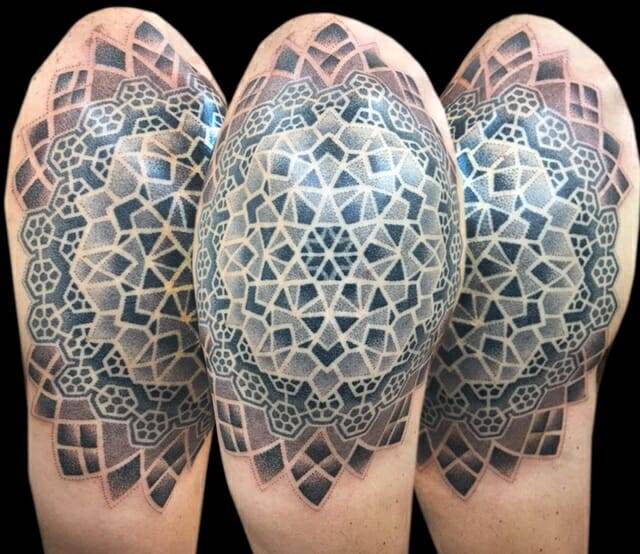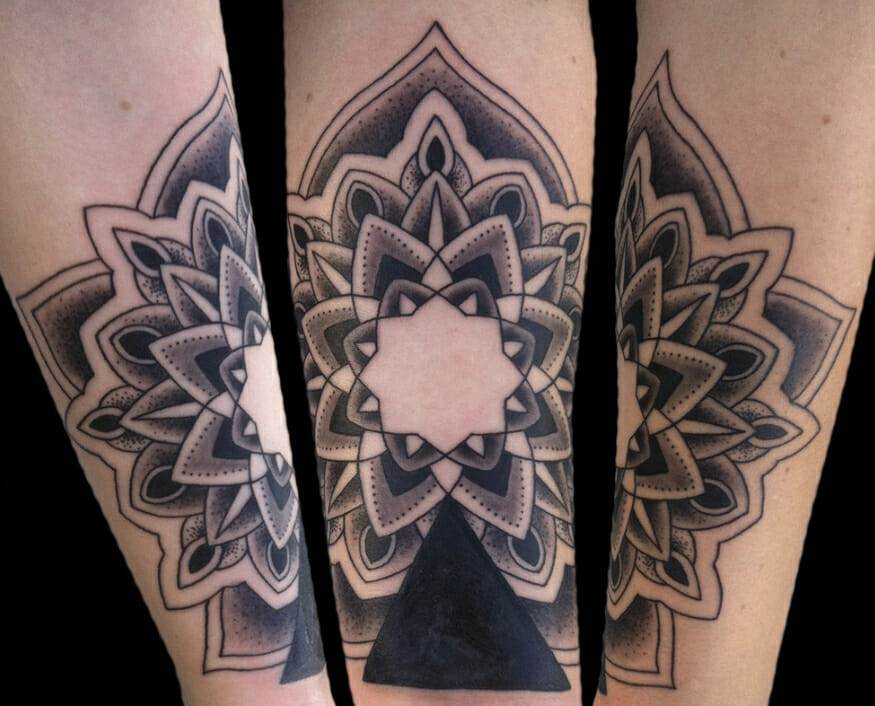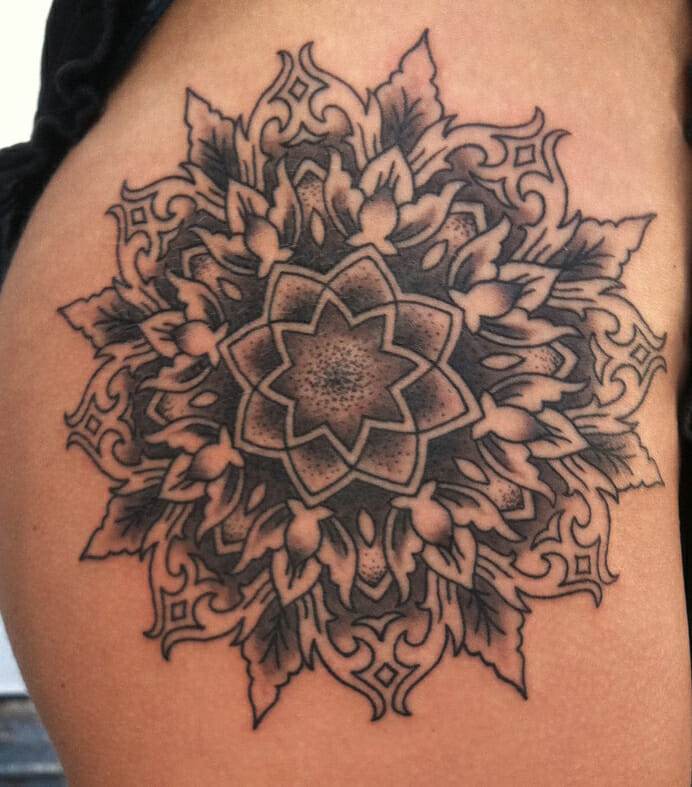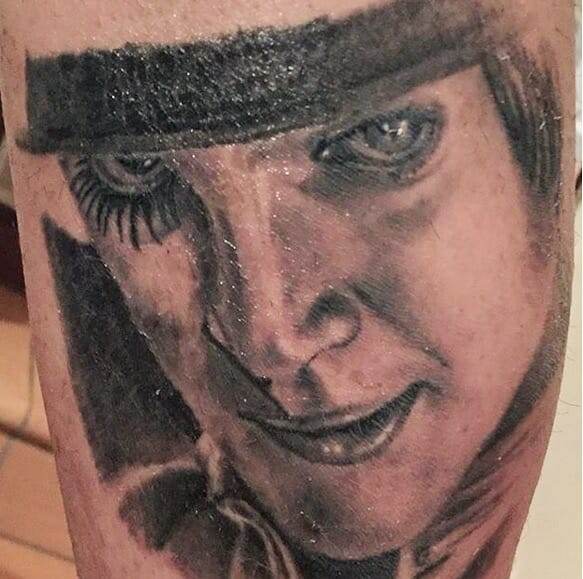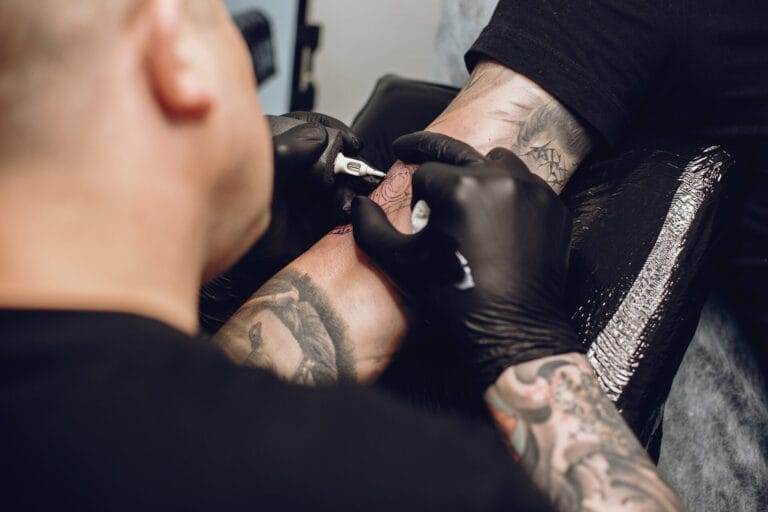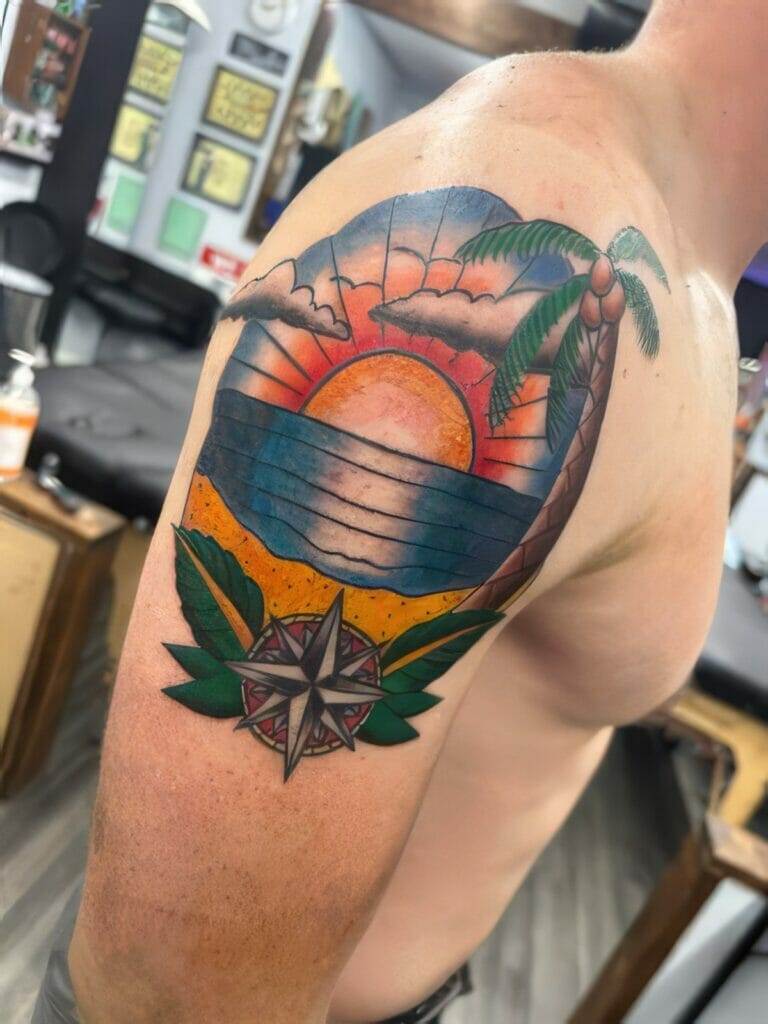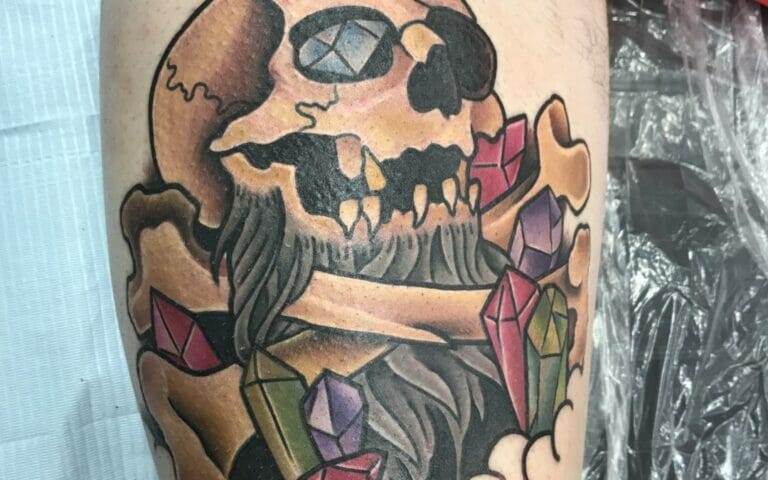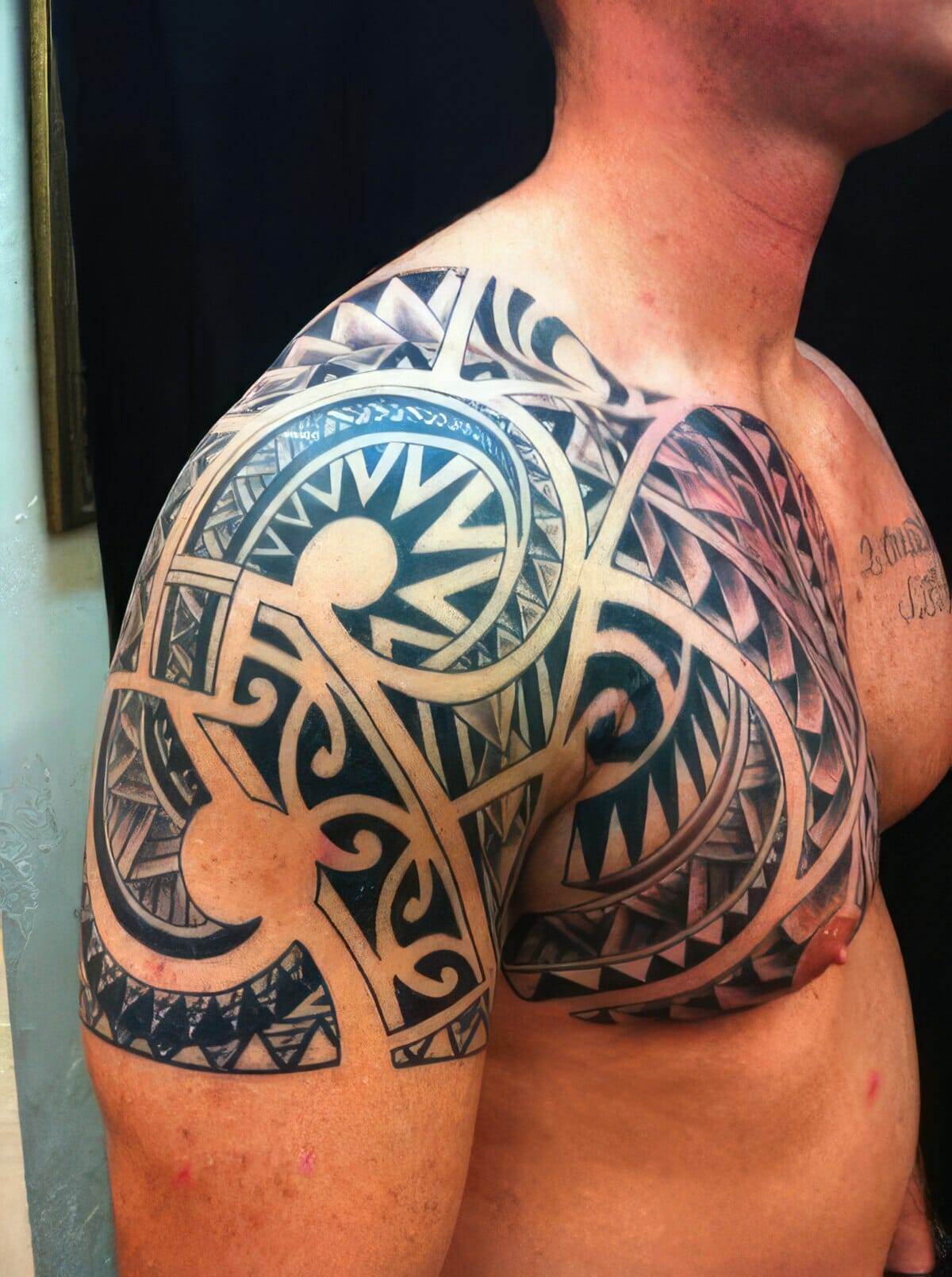
Introduction
The art of dot and stippling tattoos
Dot and stippling tattoos are a specialized form of tattooing that involves creating intricate designs using only dots or small dots and lines. This technique requires great skill and precision, as the artist must carefully place each dot to create shading, depth, and texture. Dot and stippling tattoos have gained popularity in recent years for their unique and visually striking aesthetic.
The significance and appeal of tiny dot tattoos
Tiny dot tattoos, also known as microdot tattoos, are a popular choice among tattoo enthusiasts for several reasons. Firstly, their small size allows for placement in discreet locations, making them ideal for individuals who prefer more subtle tattoos. Secondly, the minimalist design of dot tattoos appeals to those who appreciate simplicity and clean aesthetics. Additionally, dot tattoos can carry deep symbolic meanings or be personal reminders of special moments or people.
Table: Comparison between dot and stippling tattoos and traditional tattooing techniques
| Dot and Stippling Tattoos | Traditional Tattoos | |
|---|---|---|
| Technique | Dots and small dots and lines | Solid lines, shading, color blending |
| Aesthetic | Intricate, unique, visually striking | Versatile, wide range of styles and designs |
| Placement | Can be placed in discreet locations | Can be placed anywhere on the body |
| Symbolism | Can carry symbolic meanings and personal significance | Can have symbolic meanings, but not as common |
| Pain Level | Generally less painful due to smaller needle size | Pain level varies depending on tattoo size and location |
| Healing Time | Usually faster healing time due to fewer layers of ink | Healing time varies depending on tattoo size and location |
| Longevity | Can fade faster due to smaller dots | Can last longer with proper care and touch-ups |
| Customization | Can create highly detailed and intricate designs | Can create detailed designs as well as various color combinations |
| Skill Required | Requires a high level of precision and skill | Requires skill in linework, shading, and color mixing |
In conclusion, dot and stippling tattoos offer a unique and visually striking aesthetic, with the advantage of being customizable and able to carry deep symbolic meanings. They are particularly appealing to those who prefer smaller, minimalist tattoos that can be placed in discreet locations. However, traditional tattooing techniques still offer a wide range of styles and designs, allowing for greater versatility and the option for color.
Dot and Stippling Techniques
Different techniques used in dot and stippling tattoos
Dot and stippling tattoos involve the use of small dots or a combination of dots and lines to create intricate designs. This technique requires great precision and skill, as each dot must be carefully placed to achieve shading, depth, and texture. Artists who specialize in dot and stippling tattoos use various techniques such as:
- Single needle: Artists use a single needle to create individual dots, allowing for precise detailing and control.
- Stippling: This technique involves using a group of dots close together to create shading and depth.
- Dot clusters: Artists create clusters of dots to form shapes or patterns, creating a textured effect.
Creating depth and texture through dotwork
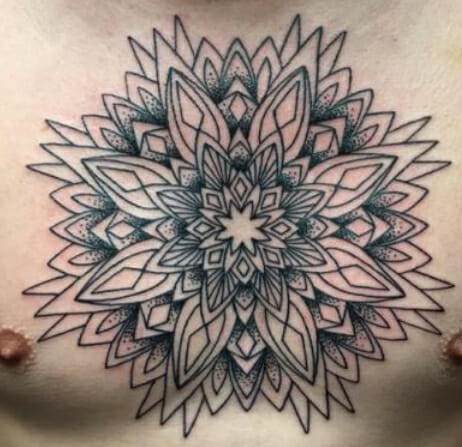
Dotwork is a technique used in dot and stippling tattoos to create the illusion of depth and texture. By varying the size, density, and spacing of the dots, artists can achieve different effects. Larger dots can create bold and impactful shading, while smaller dots can add subtle texture and detail. The careful placement and layering of dots allow the artist to create intricate designs with a three-dimensional appearance. Dotwork can be combined with other tattooing techniques, such as linework or color blending, to enhance the overall aesthetic of the tattoo.
In conclusion, dot and stippling tattoos require a high level of skill and precision to create intricate designs using dots and lines. The use of dotwork techniques allows artists to create depth and texture within the tattoo.
Choosing the Right Design
Popular designs for dot and stippling tattoos
Dot and stippling tattoos offer a unique and striking appearance and can be used to create a wide range of designs. Some popular design choices for these tattoos include:
- Geometric patterns: The precision of dotwork and stippling techniques make them ideal for creating intricate geometric designs such as mandalas, linework patterns, or dotwork skulls.
- Nature-inspired motifs: Dot and stippling techniques can be used to bring nature to life in tattoos, with designs featuring animals, flowers, trees, and landscapes. These tattoos can have a realistic or ethereal quality, depending on the artist’s style.
- Cultural symbols: Dot and stippling tattoos are often used to represent cultural symbols and heritage. From Maori-inspired patterns to Celtic knots, these designs can be highly symbolic and meaningful.
Factors to consider when selecting a design
When choosing a design for a dot or stippling tattoo, it’s important to consider the following factors:
- Placement: Think about where you want the tattoo to be located on your body and how the design will flow with your natural contours.
- Size and detail: Consider the size of the design and the level of detail you want. Keep in mind that dot and stippling tattoos can be time-consuming due to the intricate nature of the technique.
- Artist’s style: Look for an artist who specializes in dot and stippling tattoos and whose style aligns with your vision. Remember to review their portfolio to ensure they have experience in creating the type of design you’re interested in.
By considering these factors and selecting a design that speaks to you, you can ensure that your dot or stippling tattoo is not only visually appealing but also a unique representation of your personal style.
Placement Considerations
Choosing the right placement for dot and stippling tattoos
When deciding on the placement of your dot or stippling tattoo, it’s essential to consider a few factors that can enhance the overall aesthetic and longevity of the design.
- Body contours: Take into account the natural curves and contours of your body. Consider how the design will flow and complement these contours to create a visually pleasing effect.
- Visibility: Think about whether you want your dot or stippling tattoo to be easily visible or more discreet. Some popular areas for dot and stippling tattoos include the forearm, shoulder, upper back, and calf.
- Size and scale: Consider the size and level of detail in your chosen design. Smaller, intricate designs may be better suited for areas like the wrist or ankle, while larger designs may work well on larger flat surfaces like the thigh or back.
Enhancing the visual impact with strategic placement
Strategic placement can greatly enhance the visual impact of dot and stippling tattoos. Here are a few placement ideas to consider:
- Symmetry: Placing the design on a symmetrical part of the body can create a balanced and visually pleasing composition.
- Framing: Consider placing the tattoo in an area that can be framed or surrounded by other elements, such as the upper arm or upper back, to add depth and dimension to the design.
- Enhancing body features: Use the tattoo to emphasize or draw attention to certain body features, such as placing a dotwork flower design around the collarbone or a linework pattern along the spine.
By carefully considering the placement of your dot or stippling tattoo and strategically aligning it with your body’s contours, you can ensure a visually striking and harmonious result. Remember to consult with a professional tattoo artist who can guide you in choosing the best placement for your chosen design.
Placement Considerations
Choosing the right placement for dot and stippling tattoos
When individuals decide on the placement of dot or stippling tattoos, they should consider several factors to enhance the overall aesthetic and longevity of the design. It is important to consider the body’s natural curves and contours and envision how the design will flow and complement these features for a visually pleasing effect. Additionally, visibility plays a role in determining whether the tattoo should be easily visible or more discreet. Popular areas for dot and stippling tattoos include the forearm, shoulder, upper back, and calf. Size and scale are also crucial factors to consider, as smaller, intricate designs may be better suited for areas like the wrist or ankle, while larger designs may work well on larger flat surfaces like the thigh or back.
Enhancing the visual impact with strategic placement
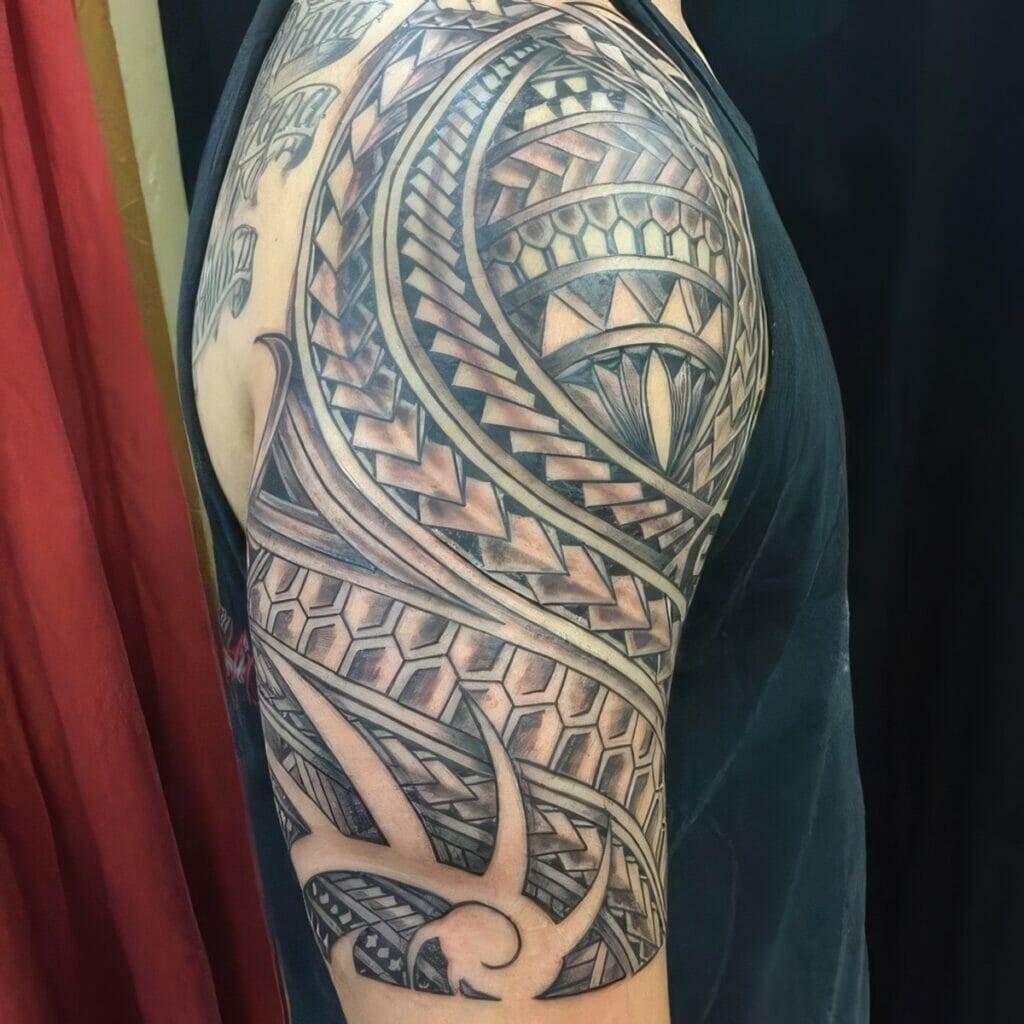
Strategic placement can greatly enhance the visual impact of dot and stippling tattoos. Consider placing the design in symmetrical areas of the body to create a balanced composition. Framing the tattoo by surrounding it with other elements, such as placing it on the upper arm or upper back, can add depth and dimension to the design. Moreover, tattoos can also be used to emphasize or draw attention to certain body features, such as a dotwork flower design around the collarbone or a linework pattern along the spine.
Carefully considering the placement of dot or stippling tattoos and aligning them with the body’s contours can ensure visually striking and harmonious results. It is always advisable to consult with a professional tattoo artist who can guide individuals in choosing the best placement for their chosen design.
Pain and Healing
Proper aftercare to ensure optimal healing
After getting a tattoo, proper aftercare is crucial to ensure optimal healing and minimize discomfort. Following these guidelines can help facilitate the healing process:
- Keep the tattoo clean by gently washing it with mild soap and warm water. Avoid scrubbing, as this can irritate the skin.
- Apply a thin layer of an ointment or moisturizer recommended by the tattoo artist to keep the area hydrated.
- Avoid picking or scratching the tattoo, as this can lead to infection and affect the final result.
- Protect the tattoo from direct exposure to sunlight and tanning beds, as UV rays can fade the ink.
- Avoid soaking the tattoo in pools, hot tubs, or baths until it is fully healed.
- Wear loose-fitting clothing to prevent rubbing and irritation on the tattooed area.
It is important to follow these aftercare instructions and reach out to the tattoo artist if any concerns or complications arise during the healing process. With proper care, individuals can ensure their tattoo heals effectively and maintains its quality over time.
Dot and Stippling Tattoo Inspiration
Exploring different themes and subject matters
When individuals are looking for dot and stippling tattoo inspiration, there are countless themes and subject matters to consider. These unique tattooing techniques lend themselves well to a variety of designs and styles, allowing individuals to create truly one-of-a-kind pieces of art. Here are a few popular themes and subject matters to consider when planning a dot or stippling tattoo:
- Nature: Dot and stippling tattoos can beautifully depict elements of nature, such as flowers, trees, animals, or landscapes. The intricate dotwork and stippling techniques can help bring these natural elements to life with stunning detail and texture.
- Geometric Patterns: For those who appreciate clean lines and symmetry, geometric patterns are a great choice. From mandalas and sacred geometry to minimalist geometric shapes, dot and stippling tattoos can create visually captivating designs.
- Abstract Art: Dot and stippling techniques can be used to create abstract tattoos that showcase unique shapes, textures, and patterns. These tattoos are highly customizable and can be tailored to each individual’s personal style and preferences.
- Cultural and Symbolic Meanings: Dot and stippling tattoos are often used to represent cultural symbols, religious iconography, or personal beliefs. These tattoos can hold deep meanings and serve as a powerful form of self-expression.
When choosing a theme or subject matter for a dot or stippling tattoo, it is essential to collaborate with a skilled tattoo artist who can bring the design to life. They can provide expert advice on how to translate the chosen theme into a stunning dot or stippling tattoo that reflects the individual’s vision and personality.

